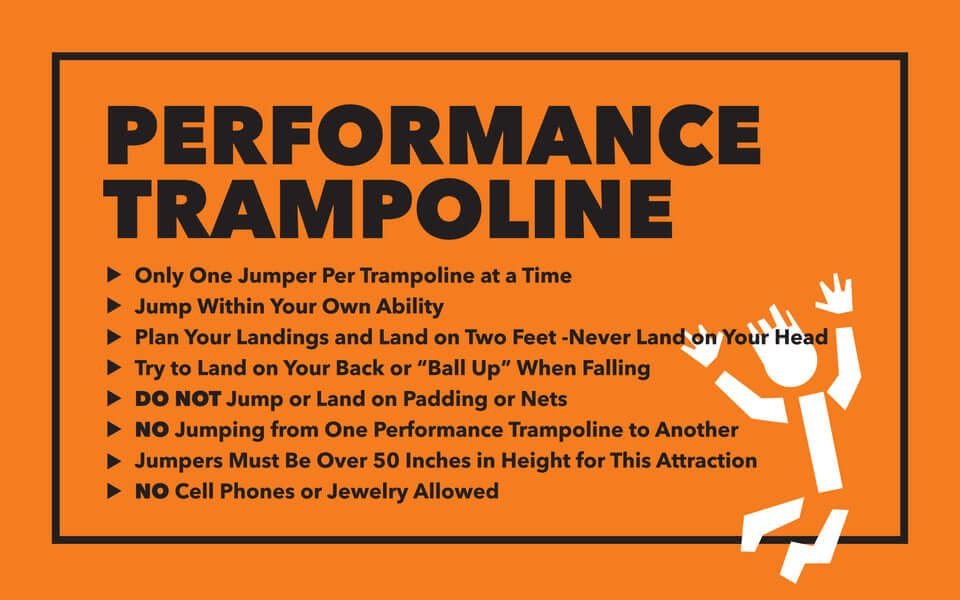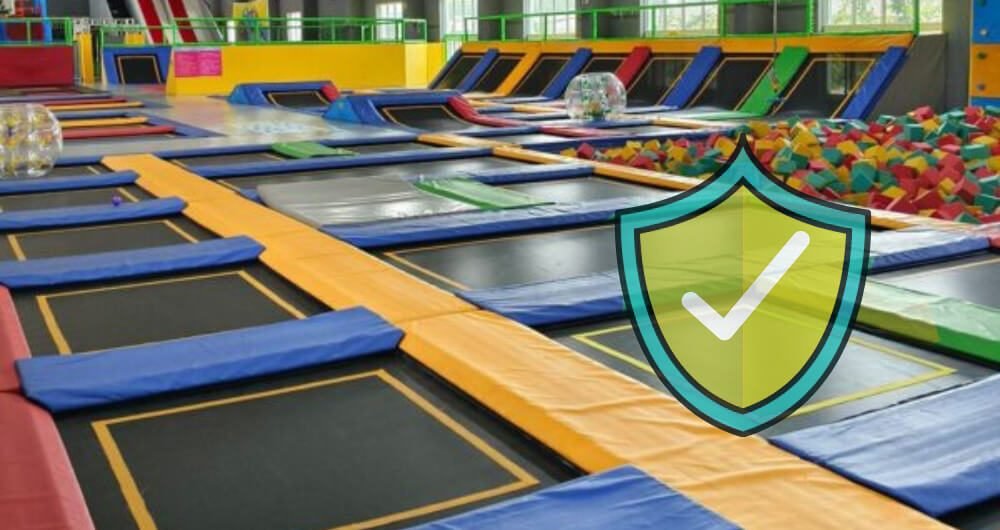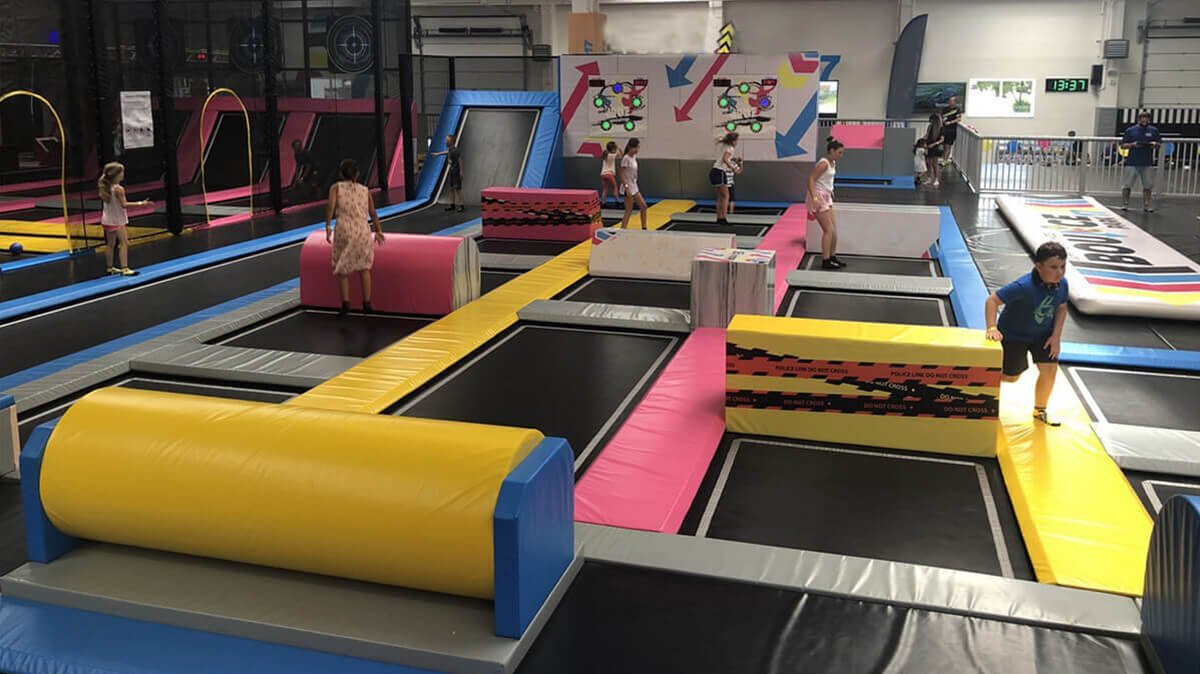Trampoline parks have become a top destination for families, kids, and thrill-seekers when it comes to delivering thrilling fun. But behind the smiles and heart-pounding action is a crucial aspect that both operators and customers need to focus on: safety. Without the right protocols in place, the chances of serious injuries skyrocket, which can lead to potential lawsuits, unhappy customers, and a tarnished reputation. So, how do you ensure your trampoline park is a fun and safe place to visit? Let’s look at the critical safety protocols that every trampoline park should have in place.

Trampoline park safety is crucial for operators and visitors alike. Key guidelines include enforcing proper jumping rules, regular equipment checks, staff training, adherence to age restrictions, and clear safety signage. By following these standards, parks can minimize injuries and ensure a fun, secure experience.
Trampoline park safety is crucial for operators and visitors alike. Key guidelines include enforcing proper jumping rules, regular equipment checks, staff training, adherence to age restrictions, and clear safety signage. By following these standards, parks can minimize injuries and ensure a fun, secure experience.
What Are the Essential Safety Rules for Trampoline Parks?
Creating a safe environment starts with enforcing clear, strict safety rules. Here’s how you can ensure a safer jumping experience for everyone at your park.
Essential safety rules for trampoline parks include enforcing single-user per trampoline, prohibiting risky stunts, and ensuring proper supervision by trained staff. Regular equipment checks, clear safety signage, and mandatory safety briefings help minimize accidents, creating a safer environment for all visitors.

1. Proper Jumping Etiquette
Jumping on a trampoline may seem simple, but improper jumping technique is a leading cause of injury. Here are some best practices:
One Jumper at a Time: Ensure that only one person uses each trampoline at any given time to prevent collisions.
Supervision: Children under 13 must be supervised by a parent or guardian to reduce the risk of accidents.
Proper Attire: Require visitors to wear park-approved grip socks and remove any jewelry, zippers, or loose clothing items.
No Risky Stunts: Prohibit flips, somersaults, or tricks beyond the skill level of the jumper, as these moves can lead to severe injuries.
Land Safely: Educate jumpers to always land on their feet and avoid landing on their head or neck, as this can cause serious injuries.
No Double Bouncing: Discourage jumpers from double bouncing, which can lead to loss of control and potential accidents.
Respect Personal Space: Instruct visitors to stay aware of their surroundings and maintain a safe distance from other jumpers.
By enforcing these guidelines, you can create a safer and more enjoyable experience for everyone.
2. Supervision and Staff Training
Well-trained staff play a vital role in maintaining the safety of a trampoline park. Staff should be familiar with safety procedures and equipped to handle emergencies. Regular training sessions ensure they can effectively monitor trampoliners and enforce the rules.
Provide a safety briefing to all visitors before they enter the jumping area. A short, engaging video or demonstration can help reinforce key safety points and prevent accidents.
3. Equipment Safety Checks
Regular inspections of trampoline mats, safety pads, and springs are essential to ensure safety. Create a maintenance schedule that includes daily, weekly, and monthly inspections to catch potential hazards before they cause harm. Work with a qualified inspector to verify that your trampoline park equipment meets safety standards.
4. Clear Safety Signage
Visible safety signs are a simple and effective way to communicate rules and prevent accidents. Place signs at entrances and throughout jumping areas to clearly indicate rules and prohibited actions. Use eye-catching colors and graphics to attract attention and make the information easy to understand.
How Do Trampoline Parks Handle Safety Regulations?
It is critical for trampoline park operators to understand and comply with industry regulations. Adhering to established standards not only improves safety, but also reduces liability and builds trust with customers.
Trampoline parks handle safety regulations by adhering to industry standards like ASTM F2970 and EN ISO 23659, conducting regular inspections, and maintaining detailed records. Compliance includes using high-quality materials, implementing safety audits, and securing comprehensive insurance, ensuring both customer safety and legal protection.

1. Compliance with Industry Standards
In the U.S., many trampoline parks follow the ASTM F2970-15 standard, which outlines best practices for design, installation, and operation of trampoline courts. Compliance with local building codes is also crucial. In Europe, EN ISO 23659 governs trampoline park design and operation, setting strict requirements to minimize risks associated with jumping activities. It addresses aspects such as jumping mat size, shock-absorbing surfaces, and safety guard heights
Staying up to date on these regulations helps operators maintain high safety standards and reduce the risk of accidents.
2. Regular Inspections and Audits
Regular inspections are necessary to keep your trampoline park safe. Establish a consistent maintenance schedule that includes inspections of the trampoline surface, springs, padding, and structural supports. Regular audits (whether conducted in-house or by a third-party safety expert) can help identify potential risks before they lead to injuries.
3. Insurance and Liability Protection
Comprehensive insurance coverage is vital for any trampoline park business. Liability waivers can help protect your business from legal claims, but they must be clearly explained to customers. Partner with an insurance provider experienced in trampoline park coverage to ensure you have adequate protection.
What Are the Age Restrictions for Trampoline Park Safety?
Trampoline parks must set clear age limits to prevent injuries and ensure a safer experience for all visitors. Here’s what you need to consider.
Most trampoline parks allow children as young as 2 years old, though some set the minimum age at 6 due to safety concerns. Parks typically have separate areas for toddlers and older jumpers, and adult supervision is required for young children to ensure a safer experience for all ages.

1. Minimum Age Requirements
While some trampoline parks allow young children as young as 2, the American Academy of Pediatrics recommends avoiding trampolines for children under 6 because their bones are still developing and they are at higher risk for injury. Consider designating specific times for young children or creating separate jumping areas to minimize risks.
2. Maximum Weight Limits
Many trampoline parks, including Altitude Trampoline Park and Air Raid Trampoline Park, set a maximum weight limit of 300 pounds for jumpers. This limit is common among several facilities to maintain safety during jumping activities.
What Safety Tips Should First-Time Visitors Know?
First-time visitors often need additional guidance to safely navigate a trampoline park. Providing clear, easy-to-understand information can enhance their experience and reduce the risk of accidents.
First-time visitors should wear non-slip socks, listen to the safety briefing, and follow all posted rules. Avoid risky stunts like flips without supervision, and stay within designated age zones. Parents should closely monitor young children, and everyone must follow staff instructions for a safer experience.

1. Pre-Visit Information and Waivers
Provide safety guidelines and waiver forms online before visitors arrive. This allows them to familiarize themselves with the rules and helps streamline the check-in process. Emphasize the importance of wearing non-slip socks and removing loose items before skydiving.
2. Safety Orientation and Rules Review
Conduct mandatory safety briefings for all visitors upon entry. Use visual aids, videos, or staff demonstrations to ensure everyone understands the key safety rules.
3. Parental Supervision and Role
Encourage parents to actively supervise their children, especially younger ones, and provide clear guidelines on how they can help enforce park rules and keep their children safe.
Conclusion: Make Safety Your Top Priority
Implementing comprehensive safety guidelines is essential for protecting visitors and enhancing your trampoline park’s reputation. By prioritizing safety, you not only prevent accidents but also create a positive experience that keeps customers coming back. As industry standards and customer expectations evolve, continually review and update your safety practices.
For more information on how to improve the safety of your trampoline park or to explore our custom play solutions, contact us at Lebo Play. Let’s work together to create a safe and enjoyable experience for everyone.

